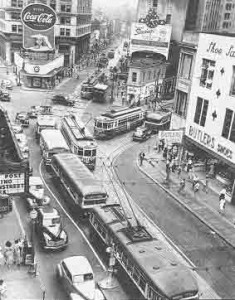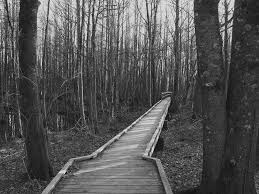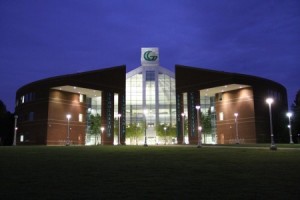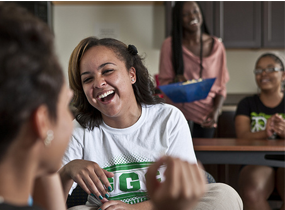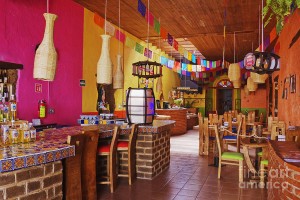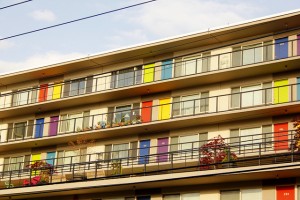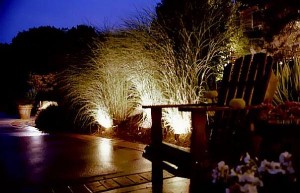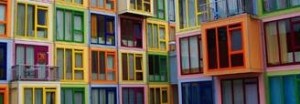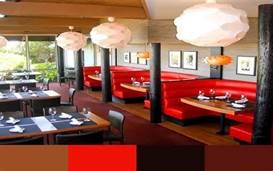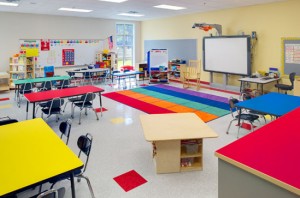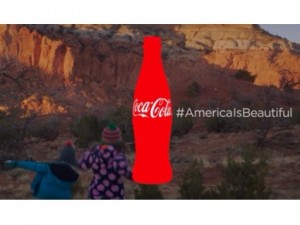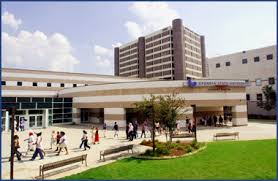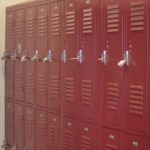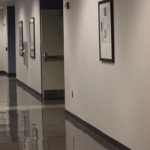
If you were to walk down Peachtree Street at night. You would be walking in a well lite area, surrounded my restaurants and businesses filled to capacity. The outside of these places would be vibrantly lit by their signs. All of these colors and lights would be flashing in your face. You could walk freely because you would not have to worry about tripping on an uneven sidewalk or being mugged unexpectedly. You would have no worries because Peachtree Street is a high-class area with upper-class residents and excited tourist. As you were walking down this grand street you would be mindful not to a venture to Auburn Ave which crosses parallel to Peachtree Street. If you did happen to mistakenly walk down this street, your surroundings would be dull boarded up buildings. There is very little light in this area and color is, even more scare. This street is known for its crime, poverty, and the dreaded minority. As you walk you would not see businesses full with people, you would instead see broken and uneven sidewalks lined with homeless individuals.
When comparing these two built environments, the two elements that mainly set them apart are color and lighting.
The vibrant colors and lights that a person sees embedded in the exterior built environment of Peachtree Street when juxtaposed to the dull and dilapidated colors and lights of Auburn Street showcase the wealth and class disparity between both environments
This is the intersection where Auburn Ave and Peachtree Street collide. This picture was taking in the 1940’s when both streets were equal regarding economic and social status. (Just image the color hiding behind the black and white film.)
Auburn Ave and Peachtree Street were once at the same social and economic level. Residents and users of the spaces were for the most part well of. Each of these built environments had the same basic elements. Both with building that were different shades brown, gray, or tan. With colorful billboards and store signs, along with bright lights to make the streets more vibrant. The only difference between the streets was that Auburn Ave was utilized by minorities mainly African Americans and Peachtree Street were utilized by whites.
As time went on Auburn Avenues economic status dropped, and the billboards and bright signs started to come down as businesses began to close, and buildings became boarded up. As this happened, Peachtree Street continued to thrive and expand increasing its lights, bright colors, and flashy appearance annually.
 Color is a fundamental aspect of the very built environment. Because it reflects the viewpoints, dynamics, and status of the people in that particular built environment.
Color is a fundamental aspect of the very built environment. Because it reflects the viewpoints, dynamics, and status of the people in that particular built environment.
Every street in a city, including Atlanta, has it a color scheme that is unique to its residents and those that are occupying the space. Which means that Peachtree Street/s color scheme compared to Auburn Ave’s color scheme would naturally be different. In an article written by a group of researchers found that color is reflective of the lives of people. In their study they talked about a scientist, named Green, who defined color in an unusual, yet remarkable way. He describes the local color as “all sights, sounds, smells and tastes, impressions of space and time, physical meetings and social interactions that individual experiences in space”(Zybaczynski). From his point of view, color effects, and reflects everything in a built environment. His viewpoints refer back to Peachtree Street and Auburn Ave. For instance, the lack of color in Auburn Ave reflect the social and economic status of the people. That lack of color also affects them in numerous other ways.
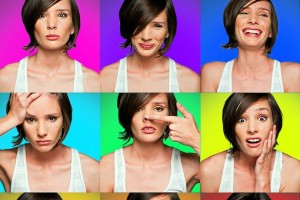 Color affects many elements of the people that it surrounds. The main aspect that color effects in people’s lives are their moods. Psychologist Jamie Hyodo studied this phenomenon in depth with a very detailed experiment. Him and his team showed colors to various groups of people and recorded how the different colors made the people react. His founding revealed that the same color can mean something different to various cultures, genders, and races. However, no matter the individual’s background, in general, cool colors (red, orange, yellow) make people feel pleasure. And, warm colors (blue, green, purple) make people feel excitement (Hyodo). All of these colors are rarely seen on Auburn Ave unless they are on some of the few businesses on the street or in the gratify on the abandoned buildings. However, these colors can be seen up and down Peachtree Street.
Color affects many elements of the people that it surrounds. The main aspect that color effects in people’s lives are their moods. Psychologist Jamie Hyodo studied this phenomenon in depth with a very detailed experiment. Him and his team showed colors to various groups of people and recorded how the different colors made the people react. His founding revealed that the same color can mean something different to various cultures, genders, and races. However, no matter the individual’s background, in general, cool colors (red, orange, yellow) make people feel pleasure. And, warm colors (blue, green, purple) make people feel excitement (Hyodo). All of these colors are rarely seen on Auburn Ave unless they are on some of the few businesses on the street or in the gratify on the abandoned buildings. However, these colors can be seen up and down Peachtree Street.
These finding, when combined with Greens statement, show that that the lack of color on Auburn Ave reflects its inhabitants the economic status, but also the affects the everyday well-being of the people living on that street. The vibrant colors of Peachtree Street reflect the status of those living on and being tourist on the street but also affects the overall experience of the street.
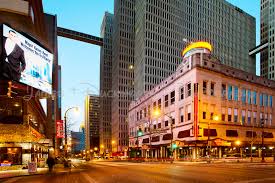

Much of the color showcased on these two streets is through lighting. Many signs have light bulbs in them so that they will visible at night. Peachtree Street has far more of these lights than Auburn Ave. There was an extensive experiment done on the effects of outdoor lighting on judgment and emotion. Various people were tested on their facial features and reaction from people exposed to a certain amount of light. The finding showed that subjects responded better with good lighting than made light. Moreover, their facial expressions revealed that when they experience more luminescence, they felt more positive(Fotios).
These findings show how the copious amounts of lights on Peachtree Street make people in the area more alert and feeling positive while the lack of light on Auburn Ave make the residents feel less alert and less happy.
It has been proven that color and lights have an effect on the general mood of the people in a built environment. Also that the color in those built environments reflects different aspects of the residents in those built environments. All of these aspects show how color and lighting showcases the differences between two built environments.
With that being said color and lighting are not the only factors that showcase this divide in social and economic status. There are number of other things can be looked at like family size, particular businesses in neighborhoods, birthrate and so on. However, color and lighting are the most obvious dividing factors between these two built environments.
If a person was to walk down to streets that were identical. One street had vibrant colors such as red, green, and bright blue and walked down another street that has dull colors that are only dark brown, gray, and darkish red tones. That would make them feel more down and less happy.
So it is no coincidence that the people in the colorless environment ,that are a lower economic and social level, and are proven to be least happy. So color reflects and affects emotion, which is exact representation of residents of both Peachtree Street and Auburn Street.
These findings are broader than Peachtree Street and Auburn Ave it can be seen throughout America. The US has one of the largest wealth disparity gap in the world. Subsequently, the color divide can be seen through the various cities in America.
In America, especially Atlanta places with vibrant colors are associated with higher class areas. Thus, color reflects economic status. Neighborhoods like Dunwoody, Buckhead, and Peachtree Street have vibrant colors. Moreover, areas with higher poverty rates like West End, College Park, and Auburn Ave have less color.
Color is everywhere in the world and is an essentially part of daily lives, even if we fail to notice it. Everyone deserves color even those with low economic and social statuses.

Work Cited
Fotios,S. Lighting Research & Technology. May2015, Vol. 47 Issue 3, p301-315. 15p. 2 Black and White Photographs, 2 Diagrams, 5 Charts, 1 Graph.
Hyodo, Jamie. Advances in Consumer Research. 2011, Vol. 39, p858-867. 10p. 6 Charts. , Database: Business Source Complete
ZYBACZYNSKI, Veronica Maria. Urbanism. Architecture. Constructions / Urbanism. Arhitectura. Constructii , 2014, Vol. 5 Issue 4, p87-92, 6p. Publisher: National Research & Development Institute URBAN-INCERC.)


